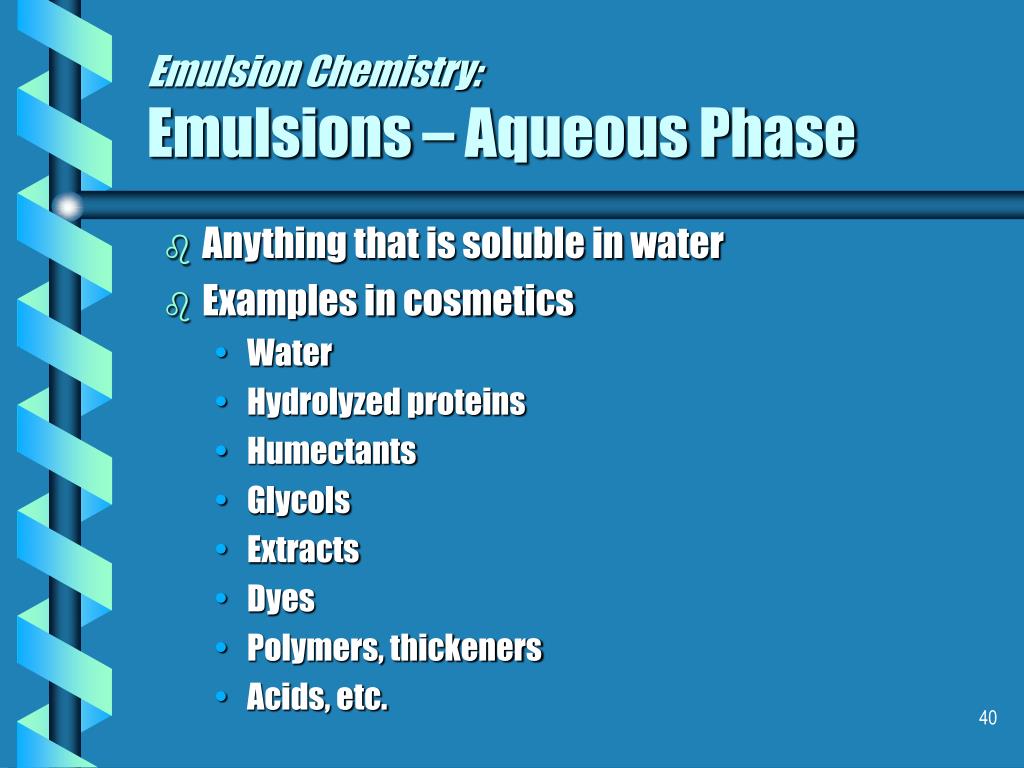
An example of this type is milk, which contains liquid fats that are dispersed in water. Oil-in-Water type (O/W type): Here, water serves as the dispersion medium while oil serves as the dispersed phase.

Examples of Emulsionsīutter, milk, Egg yold, cold cream, hair cream, etc. The process of mixing liquid to form an emulsion is called emulsification. Emulsion DefinitionĪn emulsion is defined as a liquid-liquid colloidal system that is formed by combining two or more immiscible liquids.

Emulsions are stabilized by substances that either create films on the droplet’s surface, like soap molecules, or give them mechanical stability like colloidal carbon. If the liquids that are mixed have very little or no mutual solubility, emulsions can be formed spontaneously or, more frequently, mechanically via agitation. In most cases, one of the two liquids is water and the other is oil since it is immiscible in water. These are liquid-liquid colloidal systems, however, the two liquids are immiscible. Weitz and Liang-Yin Chu,? Lab Chip, 2011, 11, 1587 DOI: 10.An emulsion is a dispersion of finely divided liquid droplets in another liquid. Harriet Brewerton Link to journal articleĬontrollable microfluidic production of multicomponent multiple emulsionsWei Wang, Rui Xie, Xiao-Jie Ju, Tao Luo, Li Liu, David A.
EMULSION CHEMISTRY FULL
The team now intend to explore the full potential of their device and promote its application in different areas. ’This beautiful work provides a very clever way to extend the applicability and uses of glass-based microfluidics,’ he says. Ho Cheung Shum, an expert in emulsions at the University of Hong Kong, in China, says: ’Such fine droplet engineering finesse creates new opportunities to explore topics such as reaction-on-demand, encapsulation of incompatible actives and templated assembly of artificial cell aggregates.’Īlberto Fernandez-Nieves, an expert in microfluidics at the Georgia Institute of Technology, US, is also impressed with the work. As the oil droplets move through the system, they merge in the main channel to form the multi-component emulsions. The device - a droplet maker, connector and liquid extractor - can be arranged in different combinations to generate different emulsions.

The team tested their system using different coloured oil droplets in water. Optical micrographs of monodisperse sextuple-component triple emulsions, containing one water-in-oil single emulsion and two oil-in-water-in-oil double emulsions Liang-Yin Chu at Sichuan University and colleagues have designed a microfluidic device capable of producing multi-compartment multiple emulsions. Chu says: ’We hope the novel type of emulsions in our work will open a new gate for the applications of emulsions in the fields of template synthesis, synergistic delivery, micro reactions, bioassay and so on.’ Control over such multi-compartment levels would allow more precise encapsulation and the development of more advanced materials. Microfluidic devices have been designed to produce such systems, but controlling the number, size and ratio of droplets at each level is difficult, especially when developing a system that has different types of emulsion droplets at the same level. Multiple emulsions are liquid systems in which emulsion droplets are placed inside each other, each droplet smaller than the last, creating ’levels’. This system could be used to encapsulate incompatible drug ingredients and to design multi-compartment materials, they say. Scientists in China have developed a device that can control the production of multiple emulsion systems.


 0 kommentar(er)
0 kommentar(er)
